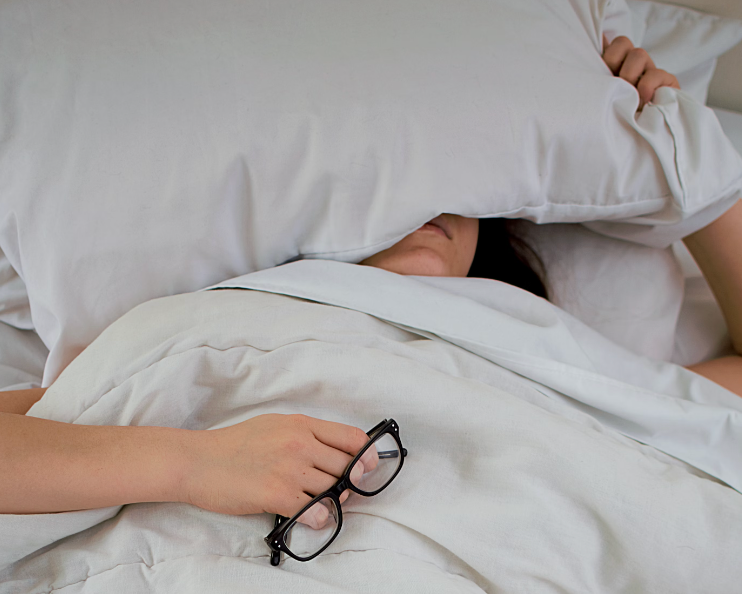News
Article
Study Pinpoints Critical, Unnecessary Components of CBT for Insomnia
Author(s):
A new study found critical components of CBT-I are cognitive restructuring, third-wave components, sleep restrictions, and stimulus control.
Credit: Unsplash

The critical, most helpful components of cognitive behavioral therapy (CBT) for insomnia are cognitive restructuring, third-wave components, sleep restrictions, and stimulus control but not relaxation, according to a new study. The investigators also found CBT was more efficient when delivered in person.1
Investigators, led by Yuki Furukawa, MD, from the department of neuropsychiatry at University of Tokyo Hospital, sought to examine the association of each component and delivery format of CBT with a primary outcome of efficacy and secondary outcomes of all-cause dropout, self-reported sleep continuity, and long-term remission. Previously, the effect of each component and delivery method had been unknown.
“At the treatment level, we found that CBT was associated with the most increased likelihood of remission followed by behavioral therapy and cognitive therapy,” wrote investigators. “At the component level, we found that cognitive restructuring, third-wave components, sleep restriction, and stimulus control were beneficial, while sleep hygiene and sleep diary were inert and relaxation potentially detrimental.”
CBT, a recommended first-line treatment for insomnia, includes several educational, cognitive, and behavioral strategies and can be delivered in person or virtually. As Nathaniel Fletcher Watson, MD, told HCPLive in 2022, individuals may associate their bedroom environment with not sleeping because of their insomnia, so practicing CBT techniques—such as venturing out of the bed, not turning off their lights, and doing something that makes them drowsy before heading back to bed—could be helpful.2 Furukawa and colleagues wanted to see what specific strategies were the most helpful for people on CBT.1
In their systemic review and component network meta-analysis, the team conducted a comprehensive literature search in PubMed, the Cochrane Central Register of Controlled Trials, and PsycInfo on May 14, 2022 and again on July 21, 2023. They gathered all randomized clinical trials published from 1980 - 2023 that compared any form of CBT against another form of CBT or a control. The studies included participants aged ≥ 18 years with chronic insomnia.
Investigators classified CBT as a psychotherapy that included ≥ 1 of the cognitive or behavioral components, including cognitive restructuring, constructive worry, third-wave components mindfulness and acceptance and commitment therapy, sleep restriction, stimulus control, paradoxical intention, and relaxation. They also included studies with several delivery formats, such as in-person, individual, or group formats.
The most common CBT arm components were cognitive restructuring (95%), sleep hygiene (94%), sleep restriction (94%), stimulus control (92%), and sleep diary (91%). Treatment duration lasted from 1 – 16 weeks.
The team found the most critical components of CBI were cognitive restructuring (remission incremental odds ratio [iOR], 1.68; 95% CI, 1.28 – 2.20), third-wave components (iOR, 1.49; 95% CI, 1.10 – 2.03), sleep restriction (iOR, 1.49; 95% CI, 1.04 – 2.13), and stimulus control (iOR, 1.43; 95% CI, 1.00 – 2.05). In contrast, they found sleep hygiene education was not necessary (iOR, 1.01; 95% CI, 0.77 – 1.32), and relaxation techniques were potentially counterproductive (OR, 0.81; 95% CI, 0.64 – 1.02).
Investigators found in-person programs were the most helpful (iOR, 1.83; 95% CI, 1.19 – 2.81). Overall, cognitive restructuring, third-wave components, and in-person delivery were linked with improving subjective sleep quality. Sleep restriction alone was linked to improved subjective sleep quality, sleep efficiency, and wake after sleep onset. Stimulus control was linked to improved subjective sleep quality, sleep efficacy, and sleep latency.
The most effective combination of CBT components was cognitive restructuring, third wave, sleep restriction, and stimulus control in an in-person format. Compared to in-person psychoeducation, this combination of components was linked to an increase in the remission rate by a risk difference of 0.33 (95% CI, 0.23 – 0.43) and a number needed to treat of 3.0 (95% CI, 2.3 – 4.3).
“Our findings may lead to personalized treatments for insomnia by matching individuals’ insomnia characteristics with appropriate techniques,” investigators wrote.
References
- Furukawa Y, Sakata M, Yamamoto R, et al. Components and Delivery Formats of Cognitive Behavioral Therapy for Chronic Insomnia in Adults: A Systematic Review and Component Network Meta-Analysis. JAMA Psychiatry. Published online January 17, 2024. doi:10.1001/jamapsychiatry.2023.5060
- Thorpy, M and Doghramiji, K. Considering Cognitive Behavioral Therapy for Insomnia. HCPLive. https://www.hcplive.com/view/considering-cognitive-behavioral-therapy-for-insomnia. Accessed January 18, 2024.





